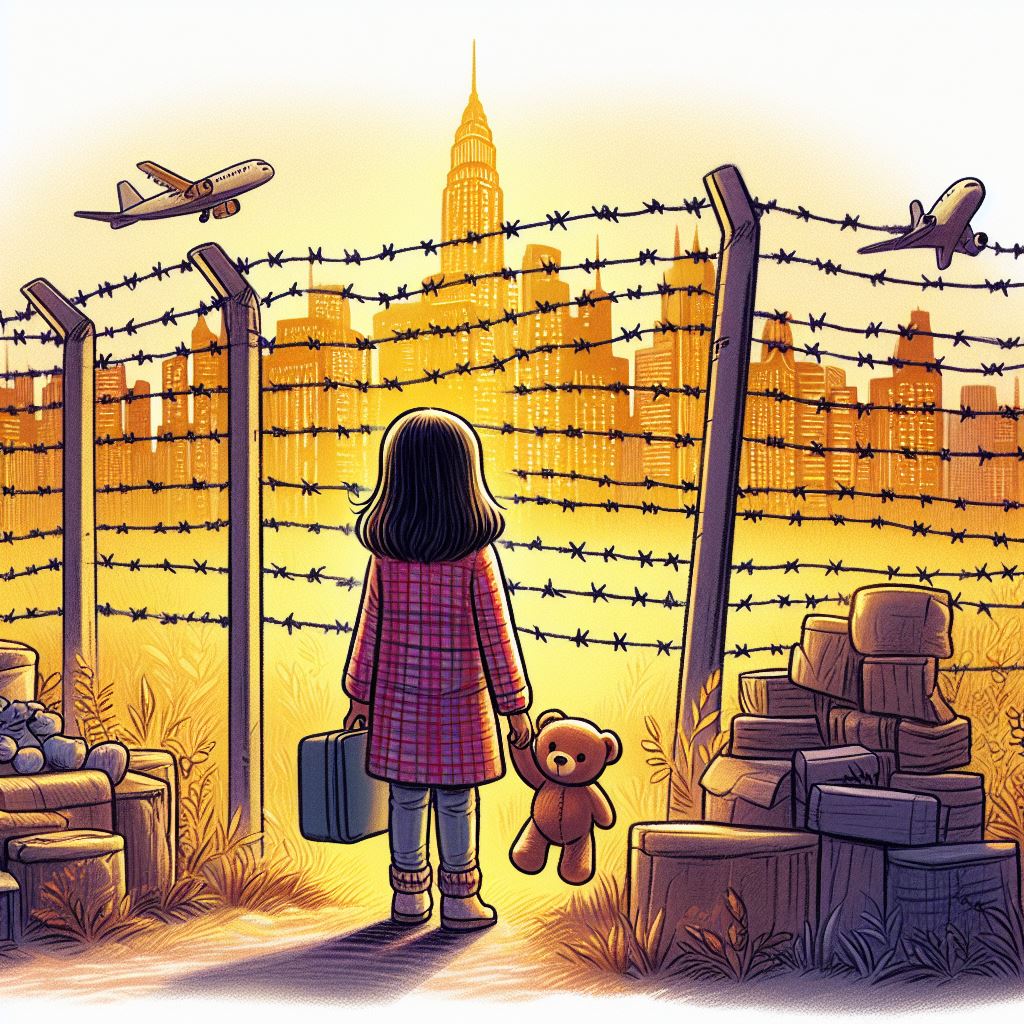The UN General Assembly defines trafficking as the unlawful and covert transportation of individuals across national borders, particularly targeting women, girls, and children, with the aim of subjecting them to sexually oppressive and exploitative circumstances for the benefit of recruiters, traffickers, criminal syndicates, and other illicit endeavors associated with trafficking, including forced domestic work, fraudulent marriages, hidden employment, and deceptive adoptions.
Magntiude of Child Trafficking
Statistical analysis hasn’t provided a clear picture of child trafficking. Mostly data focuses on the ratio of women and children involved in prostitution. So far, studies have been conducted, but they don’t give a big-picture view. Earlier, many women and girls aged 12-30 have been trafficked from Bangladesh to Pakistan, while a significant number of children are trafficked from the Middle East for camel racing. Pakistan has a large population of Afghan refugees, over two million, which affects its socio-economic and political landscape. As per US State Department Report on Trafficking in Persons (TIP), reported cases of victims of child trafficking were 35,309 in 2022. Among them, 25,919 were women, and 6,199 were men.
International Obligations
Pakistan has signed various international conventions for protection and promotion of child rights. These ratifications demonstrate the state parties’ dedication to tackling the problem of child trafficking. Also, these agreements also require the state parties to take appropriate action to stop the trafficking of children. For example, the UN Convention on Rights of the Child’s Article (35) mandates that State Parties adopt all necessary national, international, and bilateral actions to stop the kidnapping, selling, or trafficking of children for any reason or in any way.
Regional Commitments
Human trafficking refers to “the moving, selling, or buying of women and children for prostitution within and outside of a country for monetary or other considerations with or without consent of the person subjected to trafficking”, as in Article (1) (3) of the SAARC Convention on Preventing and Combating Trafficking in Women and Children for Prostitution.
On January 13, 2010, Pakistan adopted the United Nations Convention against Transnational Organised Crimes, which requires state parties to combat transnational organized crime and emphasizes addressing the problem of human trafficking, especially involving women and children. As previously mentioned, several factors contribute to child trafficking, such as child labor, exposure to child pornography, and engagement in armed warfare. Pakistan has ratified the Optional Protocols to the UN Convention on the Rights of the Child on the involvement of children in armed conflict and the Optional Protocol to the UN regarding the sale of children, child prostitution, and child pornography, taking into consideration the relevant issues. Pakistan signated the SAARC Convention on Regional Agreement for the Promotion of Child Welfare in South Asia and the SAARC Convention on Preventing and Combating Trafficking of Women and Children for Prostitution, both of which, established in 2002.
“State Parties shall take all appropriate measures, including legislation, to suppress all forms of traffic in women and exploitation or prostitution,” states Article 6 of the Convention on the Elimination of All Kinds of Discrimination Against Women (CEDAW). Accordingly, “the use, procuring or offering of a child for illicit activities, in particular for production and trafficking of drugs as defined in the relevant internal law” is stated in Article (3)(c) of the ILO Convention 182 on the Elimination of Worst Form of Child Labour.
Legal Framework related to Child Trafficking
The Criminal Law (Second Amendment) Act 2016 was promulgated to address the growing issues of child trafficking. Under this act, Section 369 A. Human Trafficking of the Pakistan Penal Code states that any individual found involved in human trafficking faces a minimum sentence of five years in prison, which can go up to seven years, or a maximum fine of five hundred thousand rupees, up to seven hundred thousand rupees, or both. Furthermore, the term “human trafficking” interprets in accordance with the definition in the Prevention and Control of Human Trafficking Ordinance, 2002.
The Human Trafficking Prevention and Control Ordinance of 2002 states that anyone found to be actively or indirectly involved in trafficking faces harsh penalties under this regulation. Additionally, the Government is also responsible for making arrangements for the shelter, food, and medical treatment of the victim, being an unaccompanied child or a needy woman.
Prevention of Trafficking in Persons Act, 2018, In an effort to tackle the growing problem of human trafficking, the Prevention of Trafficking in Person Act, 2018 enacted. According to the law, “Anyone who commits the offense of trafficking in person faces a maximum sentence of seven years in prison, a maximum fine of one million dollars, or both.” Additionally, it stipulates that if women and children are the victims of the offense, the maximum prison term is ten years.
Prevention of Smuggling of Migrants, Act 2018: According to the Act, anyone who knowingly participates in or seeks to participate in the smuggling of migrants faces a maximum sentence of five years in jail, with no less than three years, as well as a monetary penalty of up to one million rupees.
Institutional Framework
Federal Investigation Agency (FIA): Pakistan’s frontline defense against child trafficking. Under this agency, specialized Anti-Trafficking Units (ATUs) are established across Pakistan, which are mandated to investigate and apprehend traffickers, including those targeting children.
National Commission on the Rights of the Child: A national statutory body to oversee child rights in the country. However, it is not the specialized unit for child trafficking; however, as one of the mandatory obligations under UNCRC, the commission, with its general mandate, also monitors child trafficking.
Provincial Law Enforcement Agencies: Police and Border Security Forces play a pivotal role in border management to handle illegal border movement. These forces also coordinate with federal agencies to apprehend traffickers and rescue victims, including children.
Frequently Asked Questions (FAQs)
Major challenges include resource limitations, effective victim support services, porous borders, lack of public awareness and sensitization, and addressing the social contributory factors such as poverty, etc.
Non-governmental organizations (NGOs) are important pillars of the development sector and are crucial in addressing social problems at the grassroots level. In particular, NGOs can play their role in preventive measures through awareness and sensitization at various levels.
Pakistan has a vibrant legal framework; however, effective implementation remains a challenge. It is important to increase resource allocation, minimize court procedural time, and expand victim support services.
Children from disadvantaged backgrounds, orphans, street children, and those living in poverty or conflict zones are more susceptible to trafficking.
The most common signs of child trafficking are:
– A fearful or withdrawn child
– A child working for longer hours in a hazardous environment
– Unexplained injuries or signs of abuse
– A child seems controlled or coerced by an adult.
– These are some of the signs that may expand to other signs that are susceptible to the child.











